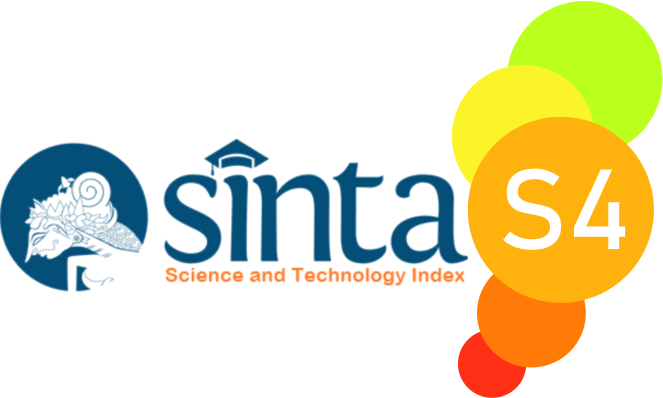The Digital Conservation and Revitalization of Regional Languages in Nusantara
Abstract
The purpose of this research is the digitization of regional languages. The form of technology that will be developed is a digital conservation and revitalization program. There are 2 stages in this program: 1) the development stage, namely the development of language learning applications. Inspired by the Duolingo application, the application for learning international languages, the application is the local version by prioritizing the values of local wisdom of the local language being studied. The basic concept of this application is to document regional languages by teaching them. This application is designed to be accessible to anyone who wants to know or learn a certain regional language through a smartphone. The features in this application product will focus on four language skills with tiered levels, each of which is presented in different themes. There will be several choices of regional languages that can be learned, the final target of developing this application is to document all regional languages of the archipelago. As an initial project, this program will digitize two regional languages in East Java, namely Javanese and Madurese. 2) socialization, education, and promotion that will be carried out in several forms of activities targeting all communities at all levels. On campus, the target is to form a community that cares about the preservation of regional languages among academics; Among students to grow the importance of preserving regional languages and make applications that will be developed as a reference to support the teaching of regional languages in schools; and society.
References
Azhari, A. (2019). Inovasi Media Pembelajaran Bahasa Arab Berbasis E-Learning. CIRCUIT: Jurnal Ilmiah Pendidikan Teknik Elektro, 3(1), 40-47.
Caivanoa, J.S. (2015). Appearance.Encyclopedia of Color Science and Technology. New York: Springer Science+Business Media.
Fishman, J. A. (1991). The Sociology of Language. Massachussetts: Newbury House Publication.
Hardesty, L. (2010). The MIT roots of Google's new software. MIT News Office.
Hadiwijaya, M., Widiayanah, I., & Amalyasari, M. R. (2019). The development of English for Transportation (EnTra) Application for Students in Training and Education Program for Human Resource Development on Transportation Agency. Jurnal ilmiah bahasa dan sastra, 6(1), 38–50. https://doi.org/10.21067/jibs.v5i1.3601
Newmonic. D. (2016). What is language?. [online], http://www.speechlanguage-resources.com/What-is-language.html, accessed on 02 September 2019.
Obiero, O.J. (2010). From Assessing Language Endangerment or Vitality to Creating and Evaluating Language Revitalization Programmes. Nordic Journal of African Studies, 19(4), 201–226.
Rahardjo, T. & INS Degeng. (2019). Pengembangan Multimedia Interaktif Mobile Learning Berbasis Anrdroid Aksara Jawa Kelas X Smk Negeri 5 Malang. Jurnal Kajian Teknologi, 2(3), 195-202.
Rappa, A.L. & Wee, L. (2006). Language Policy and Modernity in Southeast Asia. New York: Springer.
Schumaker, J. B., & Deshler, D. D. (1992). Validation of learning strategy interventions for students with LD: Results of a programmatic research effort. In Y. L. Wong (Ed.), Contemporary intervention research in learning disabilities: An international perspective. New York: Springer-Verlag.
Suharyo. (2018). Nasib Bahasa Jawa dan Bahasa Indonesia dalam Pandangan dan Sikap Bahasa Generasi Muda Jawa. NUSA, 13 (2), 244-255.
Suwardono. (2016). Bahasa Jawa: Dulu dan Sekarang. Hasil Wawancara Pribadi: 9 Juni 2016, Malang.
UNESCO. (2003). Language Vitality and Endangerment. International Expert Meeting on UNESCO Programme Safeguarding of Endangered Languages.
Widjojo, M.S. & Mashudi N. (2004). Bahasa Negara Versus Bahasa Gerakan Mahasiswa. Jakarta: LIPI Press.
Widyatmojo, G& A. Muhtadi. (2017). Pengembangan multimedia pembelajaran interaktif berbentuk game untuk menstimulasi aspek kognitif dan bahasa. Jurnal Inovasi Teknologi Pendidikan, 4(1), 38-49.
Wurm, S.A. (2001). Atlas of the World's Languages in Danger of Disappearing. UNESCO
Copyright (c) 2022 Munawwir Hadiwijaya, Kingkin Puput Kinanti, Ike Dian Puspita Sari

This work is licensed under a Creative Commons Attribution-ShareAlike 4.0 International License.

Journey: Journal of English Language and Pedagogy by http://ejurnal.budiutomomalang.ac.id/index.php/journey/index is licensed under a Creative Commons Attribution-ShareAlike 4.0 International License.






